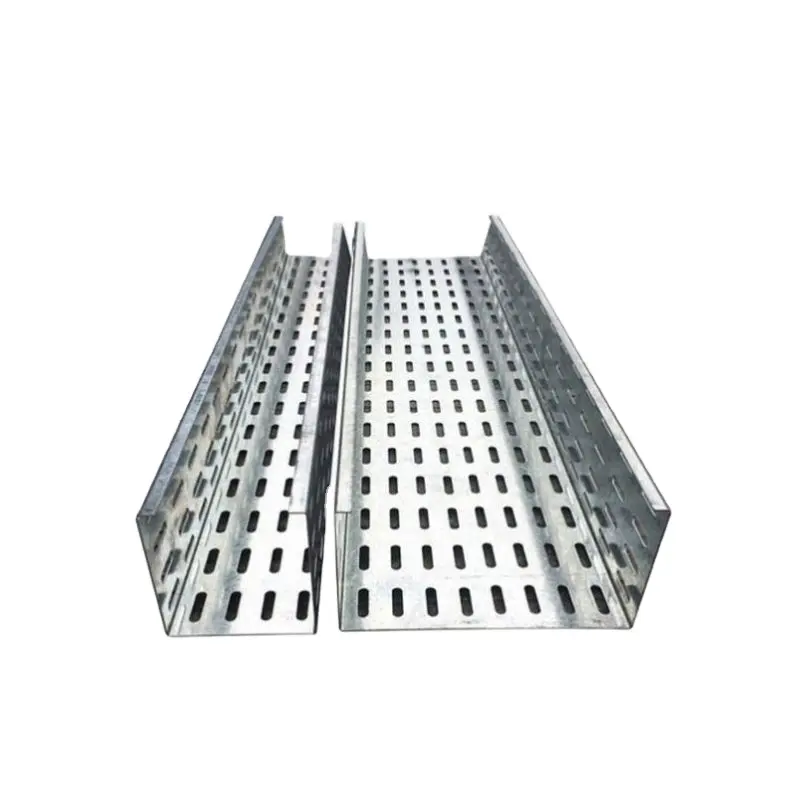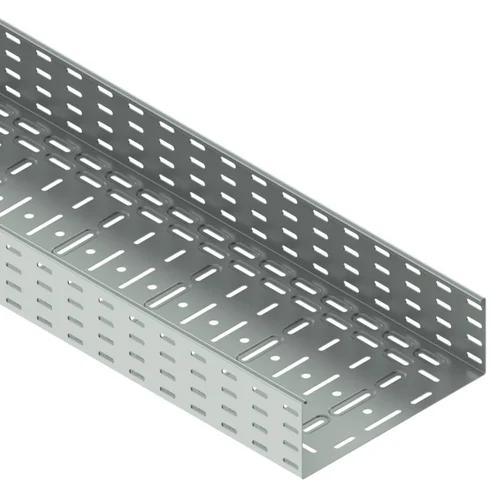Ground Cable Trays are an indispensable part of modern electrical infrastructure, serving as a structured and organized means of managing grounding and bonding cables. These trays play a critical role in ensuring electrical safety, enhancing system reliability, and facilitating efficient maintenance and upgrades. In this comprehensive article, we will delve deeper into the concept of ground cable trays, their key features, and the reasons why they are essential for various applications and environments.
1. Understanding Ground Cable Trays
Ground Cable Trays are support systems designed to hold and route grounding and bonding cables in a secure, orderly, and easily accessible manner. They are typically made from metallic materials like steel or aluminum, but non-metallic options such as PVC are also available for specific applications. The design of ground cable trays can vary, with common types including ladder trays, solid bottom trays, and wire mesh trays.
The primary function of ground cable trays is to provide a reliable and low-impedance path for fault currents to flow safely to the ground, thereby protecting people, equipment, and infrastructure from electrical hazards. Additionally, ground cable trays contribute to the overall organization and management of electrical systems, promoting efficiency, and facilitating maintenance and expansion.

2. Electrical Safety and Ground Cable Trays
One of the most crucial aspects of ground cable trays is their role in ensuring electrical safety. By providing a dedicated pathway for grounding and bonding cables, ground cable trays help prevent electrical shocks, fires, and equipment damage due to faults or short circuits. Key safety benefits of ground cable trays include:
Low-impedance grounding: A well-designed ground cable tray system ensures that grounding and bonding cables have a low-resistance path to the earth, allowing fault currents to flow quickly and safely away from electrical equipment and personnel.
Cable segregation: Ground cable trays help segregate grounding and bonding cables from other power or control cables, reducing the risk of accidental contact and potential electrical hazards.
Structural support: Ground cable trays offer structural support for grounding and bonding cables, preventing them from sagging or coming into contact with other cables or components. This helps maintain proper cable bend radius, reduces strain on connections, and minimizes the risk of damage due to environmental factors or mechanical stress.
3. Organized Cable Management and Efficiency
Ground cable trays contribute significantly to the organization and efficiency of electrical systems. By providing a structured platform for grounding and bonding cables, ground cable trays help:
Reduce clutter: An organized cable management system facilitated by ground cable trays minimizes cable clutter, improving aesthetics and reducing the risk of trip hazards in workspaces.
Enhance airflow: Proper cable separation within ground cable trays promotes better airflow around electrical systems, which can help prevent overheating, improve energy efficiency, and extend the lifespan of cables by reducing stress and wear.
Facilitate easy access: Ground cable trays enable technicians to access grounding and bonding cables quickly and easily, simplifying maintenance, repairs, or upgrades without causing disruptions to the electrical system.
4. Flexibility and Adaptability
Ground cable trays offer flexibility and adaptability to accommodate different applications and environments. Key features that contribute to their versatility include:
Customizable designs: Ground cable trays are available in various materials, sizes, and configurations, allowing them to be tailored to specific project requirements, such as load capacity, corrosion resistance, or fire-rated properties.
Modular construction: Many ground cable trays feature modular designs, enabling easy installation, modification, or expansion as electrical systems evolve or new cables are added.
Compatibility with accessories: Ground cable trays can accommodate a wide range of accessories, such as supports, connectors, covers, and dividers, which further enhance their functionality and adaptability.
5. Compliance with Electrical Codes and Standards
The use of ground cable trays is often mandated by electrical codes and standards, such as the National Electric Code (NEC) in the United States, to ensure safe and reliable electrical installations. Adhering to these guidelines helps facilities avoid penalties, fines, or legal liabilities associated with non-compliance. Key compliance aspects related to ground cable trays include:
Proper grounding and bonding: Ground cable trays must be properly grounded and bonded according to NEC requirements to protect against electrical faults and reduce the risk of fire or equipment damage. Use appropriate grounding straps, jumpers, or bonding conductors to create a continuous and low-impedance path for fault currents.
Cable fill percentage: Ground cable trays have maximum recommended fill percentages to prevent overcrowding and ensure proper airflow. Overfilling a tray can lead to reduced cable life, increased heat buildup, and potential safety hazards such as electrical shorts or fires. Follow NEC guidelines or manufacturer recommendations for appropriate fill percentages based on cable size and type.
Installation practices: Ground cable trays should be installed following industry best practices, including proper tray spacing, support intervals, and routing to maintain structural integrity and prevent sagging or collapse.

6. Real-World Applications and Case Studies
Ground cable trays find applications in various industries and environments where electrical safety, reliability, and efficiency are paramount. Some examples include:
Industrial facilities: In manufacturing plants, warehouses, and processing centers, ground cable trays help manage grounding and bonding cables for machinery, automation systems, and power distribution networks.
Commercial buildings: Office complexes, hospitals, and shopping centers rely on ground cable trays to organize and protect grounding and bonding cables for lighting, HVAC systems, data networks, and emergency power supplies.
Data centers: Ground cable trays play a critical role in data center infrastructure, ensuring the safe and efficient routing of grounding and bonding cables for server racks, networking equipment, and power distribution units.
Utility and transportation sectors: Ground cable trays are used in utility substations, power generation facilities, and transportation systems like airports, railroads, and highways to manage grounding and bonding cables for communication, signaling, and control systems.
By examining real-world case studies, it becomes evident that ground cable trays contribute to the overall safety, reliability, and efficiency of electrical systems across various industries.
Conclusion
Ground Cable Trays are an indispensable component of modern electrical infrastructure, playing a vital role in ensuring electrical safety, facilitating organized cable management, enabling easy access and maintenance, offering flexibility and adaptability, providing structural integrity and support, and complying with industry standards and regulations. Investing in high-quality ground cable trays and following best practices for their installation and maintenance is essential for protecting people, equipment, and infrastructure from electrical hazards and optimizing the performance of electrical systems. As technology continues to advance and electrical systems become increasingly complex, the importance of ground cable trays in maintaining safe and reliable electrical infrastructure will only continue to grow.

